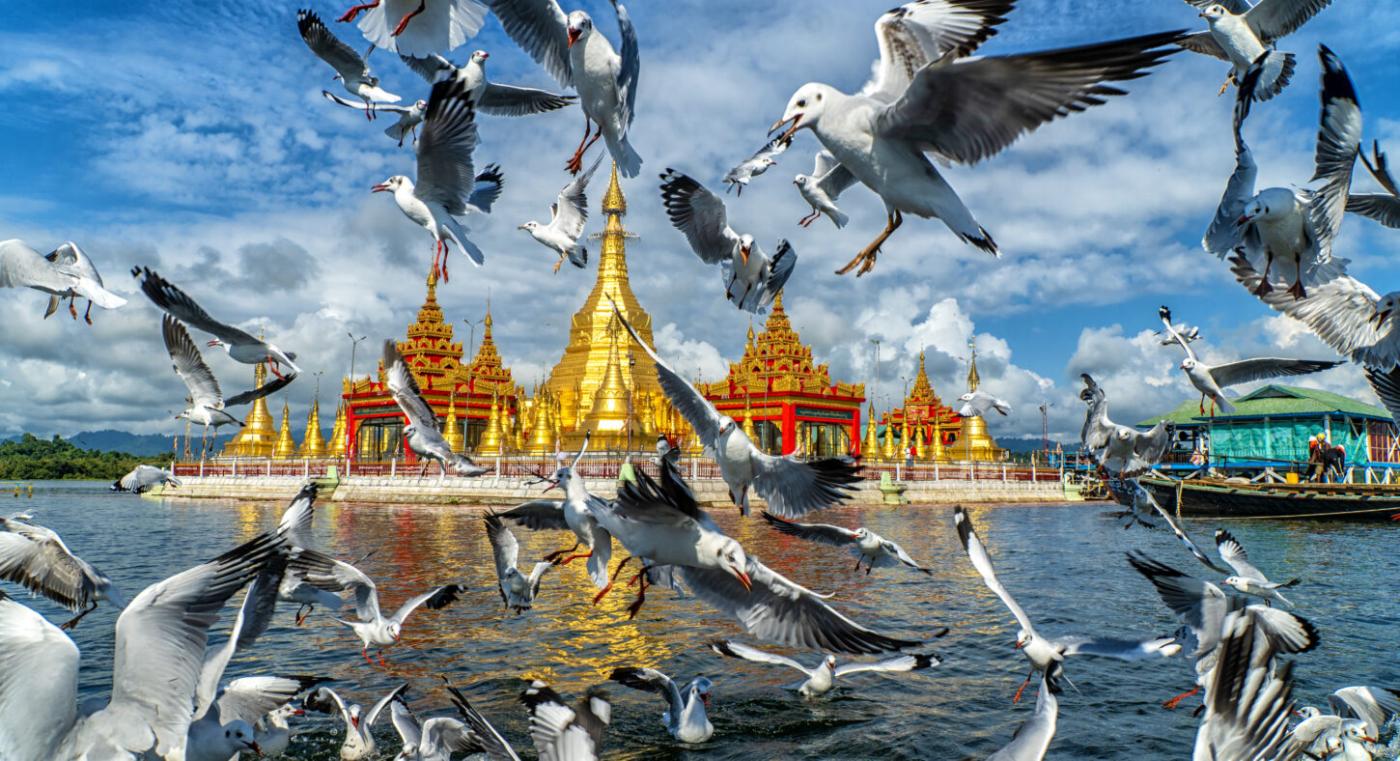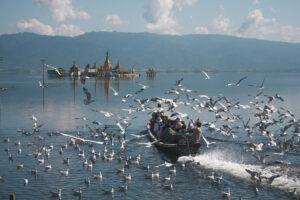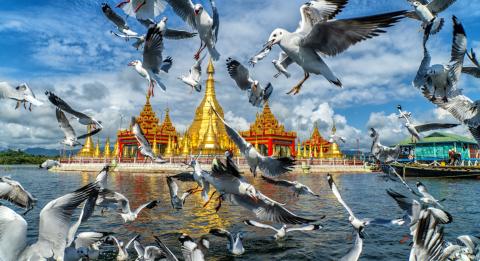Rarely seen Burmese peacock turtles thriving in ASEAN Heritage Park


Photo by Myo Thet
A recent report shared exciting news for the conservation community—eggs and hatchlings of the endemic and critically endangered Burmese peacock softshell turtles or Nilssonia formosa were found in Indawgyi Lake, located in the Kachin State of Myanmar. According to Fauna & Flora International (FFI) in Myanmar, this success can be attributed to the “turtle guardians,” or the local communities in the area supported by FFI to protect turtle nesting sites. The turtle guardians had no idea what species of turtle the eggs belonged to when they began protecting a number of nests and eggs in October. Learning that the eggs belonged to the elusive Burmese peacock softshell turtles when they hatched in June was a welcome surprise.
Turtles are the most threatened group of vertebrate animals in the world—over 60% of known species (there are at least 360) are severely imperiled by habitat loss and degradation, pollution of freshwater and marine ecosystems, unsustainable exploitation (over-harvesting of adult animals and eggs for subsistence, perceived medicinal uses, and as pets), and the impacts of invasive alien species and climate change. Softshell turtles, or the family Trionichydae, which Nilssonia formosa belongs to, are highly diverse in the Asian region, where about 27 of the 35 known species are found, inhabiting freshwater and estuarine ecosystems. These turtles are highly secretive animals, and not much is known about their life history, ecology, and distribution. In fact, new species of freshwater turtles continue to be discovered in unexplored regions of Asia.
Burmese peacock softshell turtles got their common name from the black and orange spots on their shells, reminiscent of the distinct design and pattern found in peacock feathers. It is a highly aquatic species that is associated with large rivers with sandy substrates. Eggs are laid on sandbanks in the river; about 20 eggs are laid in each clutch. It is not known how many clutches a female may lay in a year. Mandalay Zoo is breeding this species and has a number of hatchlings. The main threat to the species is habitat loss and trading for the East Asian food market.
A pride of ASEAN
In addition to these rarely seen turtles, Indawgyi Lake is home to a multitude of species—from migratory birds to native and endemic species that are uniquely ASEAN.
Known as the largest inland lake of the ASEAN region and the third largest lake in the world, Indawgyi Lake is part of the Indawgyi Lake Wildlife Sanctuary. The sanctuary is a haven for globally important bird species—as it supports over 160 bird species, including critically endangered ones. The lake plain serves as a refuge for over 20,000 migratory birds, such as the sarus crane, wood snipe, and lesser adjutant, to name a few.
“Since the Indawgyi area is an important site for both migratory and resident waterbirds and water-dependent birds, all are on the priority list for protection. Moreover, two critically endangered resident vultures, white-dumped vulture and slender-billed vulture, are also being prioritised for conservation because Indawgyi holds one of the key vulture populations in Myanmar,” said U Maung Win, park manager of Indawgyi Lake Wildlife Sanctuary.
U Maung Win shared that the sanctuary cradles other species of high conservation importance, such as the great hornbill, oriental pied hornbill, rufous-necked hornbill, wreathed hornbill, oriental brown hornbill, green peafowl, eastern hoolock gibbon, shortridge’s langur, and hog deer. “Endemic and commercial fish in the Indawgyi lake and rivers are also given high priority for conservation,” he added. The lake has over 90 species of fish, which include two endemic species: Indostomus paradoxus and Microphis dunckeri, and six species that are new to science: Lepidocephalichthys sp. Indawgyi, Physoschistura sp. Indawgyi, Schistura sp. cf. Malaisei, Schistura sp. n., Amblyceps sp. Indawgyi, and Acanthocobitis sp. Indawgyi.

Birdwatchers may visit Indawgyi from November to March when thousands of birds flock over the lake Photo by: Wai Phyoe Maung
These are among the reasons why Indawgyi Lake Wildlife Sanctuary was declared as an ASEAN Heritage Park in 2003. The ASEAN Heritage Parks Programme was first established in 1984 to recognise protected areas and nature reserves with outstanding biological and ecological diversity, with the ASEAN Centre for Biodiversity (ACB), acting as Secretariat of the AHP Programme. To date, there are still only 55 of these protected areas that are considered regionally important. “The hatching of the rare Burmese peacock turtles in Indawgyi Lake Wildlife Sanctuary is just one indicator of the valuable role of the AHPs as remaining natural areas where unique ASEAN wildlife can thrive and for their species to continue to survive for generations,” said Dr. Theresa Mundita Lim, executive director of the ACB.
To conserve this wealth of biological resources in Indawgyi, the AHP programme paves the way for financial and technical support from various partners, such as the Federal Government of Germany through the KfW-supported ACB Small Grants Programme. Through this programme, small grant projects on sanitation and waste management, agriculture and value chain development, sustainable fishery management, and nature-positive tourism are being implemented in the area.
U Maung Win shared that being an AHP likewise helped improve the livelihood of the local communities within the park through the implementation of various projects in organic farming, organic home gardening, agroforestry, and ecotourism.
Due to its isolation from popular tourist destinations, Indawgyi offers a unique spiritual, cultural, and intimate encounter with nature. Aside from its natural features, it is known for the Shwe Myint Zu Pagoda, which is strategically positioned in the lake.
Imagine yourself paddling a kayak in the midst of a serene lake while admiring an incredible sunset, a swarm of birds, and a golden pagoda. All these and more are what Indawgyi Lake Wildlife Sanctuary offers—indeed an enchanting hidden paradise that is worth preserving and protecting.

